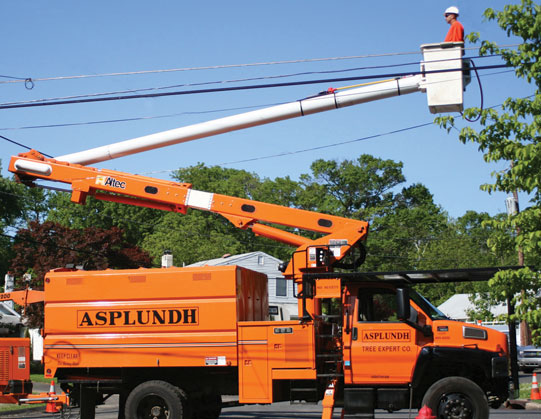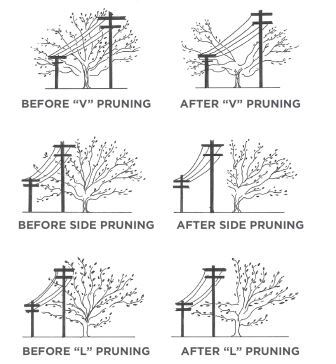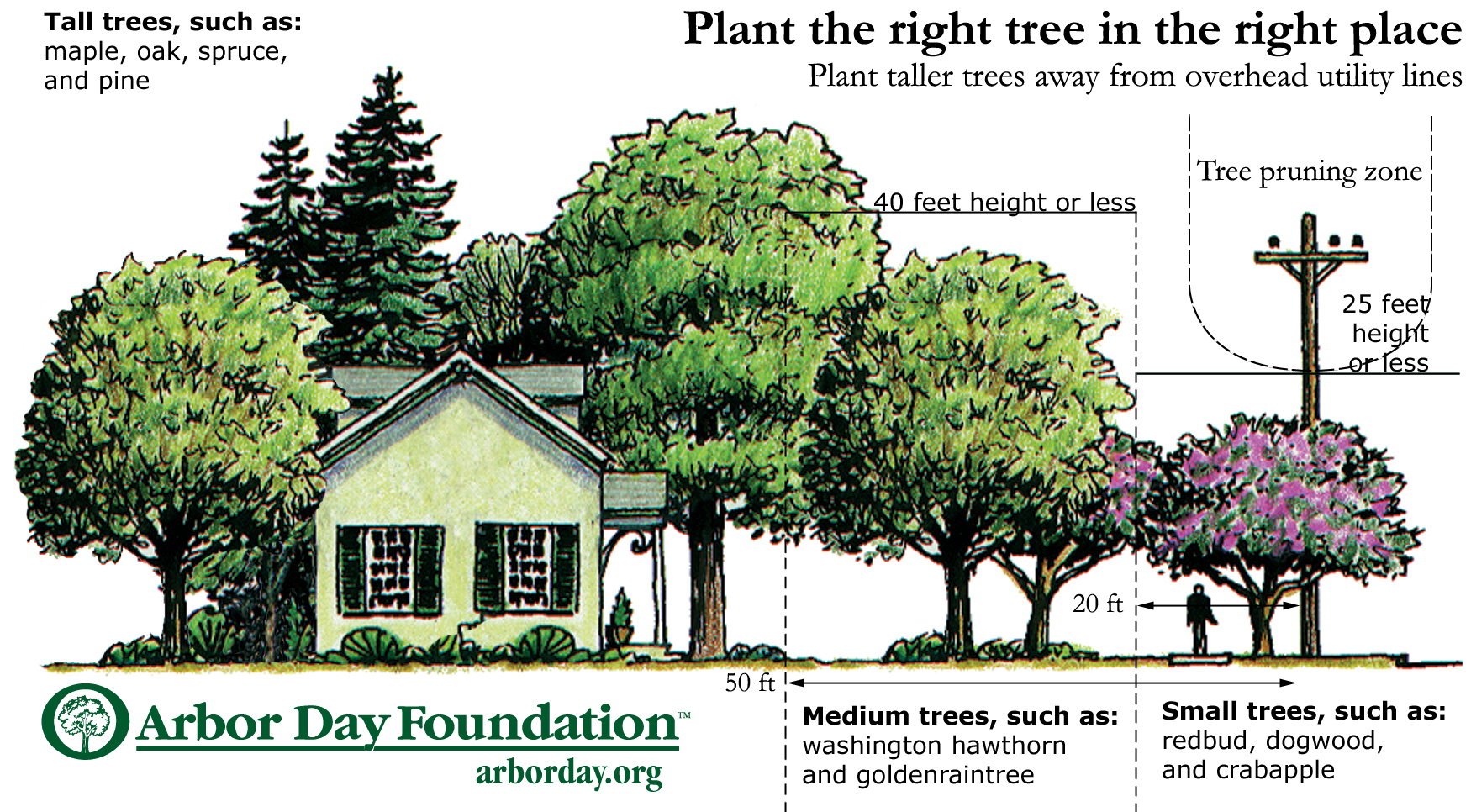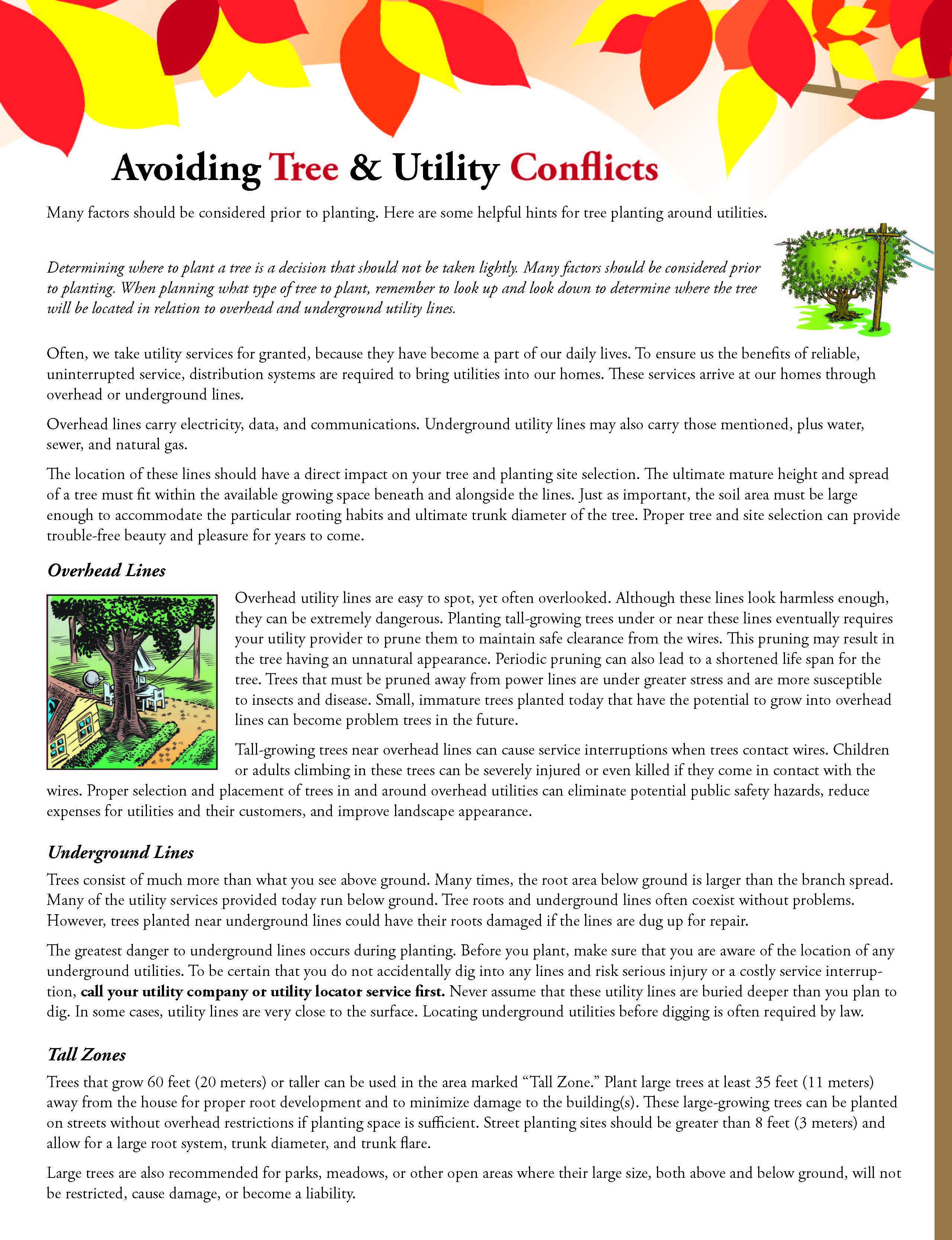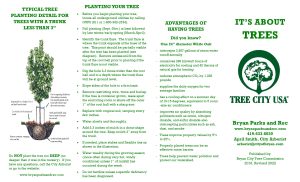Tree Pruning Around Power Lines
It is the goal of Bryan Municipal Utilities to ensure safe, reliable service to their customers and to maintain access to utility structures.
Trees growing too close to power lines can become a hazard and contribute to power outages. Ice, snow, and wind can break branches growing above and among wires and cause the wires to malfunction or break. Trees are one the most common reasons for utility outages. Pruning trees to avoid contact with electrical conductors and equipment is required to maintain reliable electrical service, increase the safety of crews and the public, and is mandated by Ohio and Federal law. This specialized pruning is known as line clearance pruning.
BMU has contracted with Asplundh Tree Experts in 2019 to perform line clearance pruning throughout our system. Asplundh is a well established company that has over 80 years of experience in utility line clearance. All pruning will follow the latest American National Standards Institute (ANSI) A-300 pruning standards and employ Best Management Practices for utility pruning developed by the International Society of Arboriculture. All work will be performed under the supervision of certified arborists with safety as the first priority.
The most appropriate way to prune trees for electric utility line clearance is by directional pruning. This pruning method removes branches growing toward conductors in favor of those growing away. Branches are pruned back to a lateral branch that is at least one-third the diameter of the branch being removed. This allows for good wound closure and reduces sprouting. Directional pruning removes fewer leaves, which trees need for making food. Directional pruning actually removes fewer branches and increases wound closure, thereby reducing internal decay.
In some situations tree removal may be preferable to line clearance pruning including:
- Fast-growing species growing directly under the power lines that require frequent pruning and will never have a natural form – high outage risk
- Saplings (brush) with the potential to grow into or close to the lines
- Large, previously topped trees under the lines
- Hazardous trees (examples – leaning, in decline, severe dieback, cracked or split, hollow, insect/disease infestation, etc)
- Tree species recognized as invasive
Customers affected will be notified by door hangers or in person prior to work beginning. If you have any questions or concerns please contact BMU at 419-633-6100 or City arborist April Smith at arborist@cityofbryan.com.
Common FAQs
(Provided by www.asplundh.com)
How do you pronounce that name?
Why do you have to prune or remove my trees? Why do you have to prune so much?
Some common reasons include:
- Utilities are usually required by law to maintain safe and reliable electric service for the public.
- Trees near utility lines must be pruned or removed to keep the power on, and to protect high-voltage lines from damage.
- Reducing the threat from trees will reduce power failures and the hazard of downed wires, especially during storms, when trees and branches sway considerably. A single tree failure can cause a power outage for thousands of people.
- The amount of pruning varies depending on the type of tree, how often the tree is pruned, and the type of power line.
- Tree care industry standards recommend removing branches that grow toward the lines, reducing the amount of pruning needed in the future.
- Some trees grow many feet per year, and will quickly grow back into the lines unless they are adequately and properly pruned.
- Tall growing trees directly beneath power lines may require extensive pruning, including the removal of the main leader.
Who gave you permission to access my property to prune my trees? How much will it cost?
Can you top or prune the whole tree to give it a more symmetrical shape?
